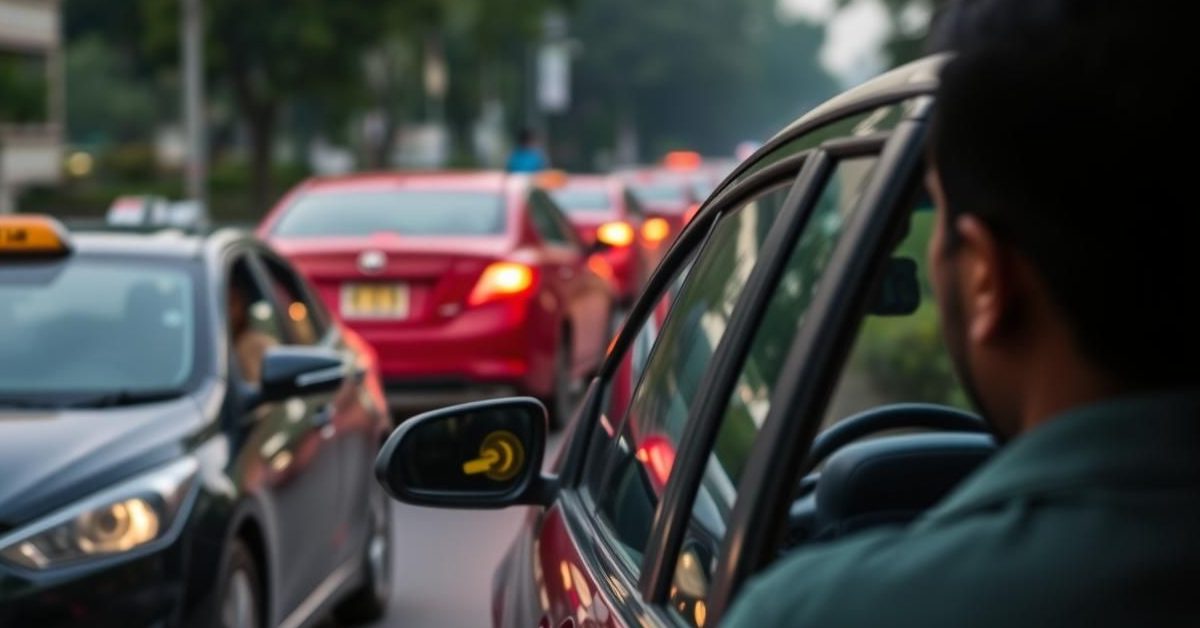A significant shift is underway in how you might pay for your next cab ride. India’s government has unveiled new regulations, empowering major ride-hailing platforms like Uber, Ola, and Rapido to levy up to twice their standard base fare during the busiest periods. This move marks a notable increase from the previous ceiling of 1.5 times the base fare, directly impacting millions of commuters navigating the urban sprawl.
The updated framework, part of the Ministry of Road Transport and Highways (MoRTH)’s revised Motor Vehicle Aggregator Guidelines, 2025, aims to introduce a more adaptive pricing structure. While peak hour charges are set to soar, the guidelines also establish a floor for non-peak hours, allowing aggregators to charge a minimum of 50% of the base fare. This creates a broader pricing band, reflecting demand fluctuations more acutely.
Understanding Your Base Fare: What the States Decide
At the heart of this new system lies the ‘base fare.’ This isn’t arbitrarily decided by the aggregators themselves; rather, it’s the rate officially notified by individual state governments for each specific category or class of motor vehicle. This ensures a degree of standardization and oversight. States across the nation have been strongly encouraged to adopt these comprehensive revised guidelines within a swift three-month timeframe, paving the way for uniform implementation.
The ‘Dead Mileage’ Dilemma: A Fair Deal for Drivers?
One crucial aspect addressed by the new guidelines is the concept of “dead mileage.” This refers to the distance a driver travels without a passenger – either to pick someone up or simply while awaiting a booking. To fairly compensate drivers for their time and fuel spent on these unremunerated stretches, the base fare will now cover a minimum of 3 kilometers. This effectively acknowledges the operational costs incurred before a passenger even steps into the vehicle.
However, this compensation for dead mileage comes with a clear caveat for passengers. You won’t be charged for these empty kilometers unless your total ride distance is less than 3 kilometers. For journeys exceeding this threshold, your fare will commence precisely from your point of origin, ending at your destination, ensuring transparency and fairness from a rider’s perspective.
Empowering Drivers: A Larger Slice of the Fare Pie
A significant win for drivers emerges from these new regulations. For vehicles owned by the drivers themselves and onboarded with an aggregator, the driver is now mandated to receive a minimum of 80% of the total fare applicable, encompassing all associated costs. The remaining 20% forms the aggregator’s apportioned share. This aims to provide a more substantial income for independent drivers. Furthermore, payment settlements are designed to be frequent – daily, weekly, or fortnightly – ensuring timely remuneration as per agreements.
In cases where the motor vehicle is owned by the aggregator company itself, the onboarded driver is still guaranteed a substantial share, receiving at least 60% of the applicable fare. This distinction reflects the differing ownership models within the ride-hailing ecosystem while still prioritizing driver welfare.
Navigating Cancellations: New Penalties for Both Sides
The revised guidelines also introduce a more stringent approach to ride cancellations, aiming to reduce inconvenience for both drivers and passengers. If a driver accepts a journey but then cancels without a valid, justifiable reason, a penalty equivalent to 10% of the fare, capped at Rs 100, can now be imposed. This move seeks to enhance reliability and deter last-minute cancellations from the driver’s end.
Conversely, passengers are also held accountable. Should a rider cancel a booked trip without a valid reason, they too face a penalty of 10% of the fare, not exceeding Rs 100. This symmetrical approach intends to foster a more responsible booking environment for everyone using these services.
The Broader Vision: Safety, Security, and Driver Welfare
These updated guidelines, building upon the foundational 2020 framework, represent MoRTH’s commitment to creating a “light-touch regulatory system.” The overarching goal is multifaceted: to enhance the safety and security of passengers utilizing these services, while simultaneously ensuring the welfare of the dedicated drivers who form the backbone of the ride-hailing industry. This comprehensive revision signals a maturation of the sector’s regulatory landscape, seeking a delicate balance between market dynamics and consumer/driver protection.












